5-Day Lhasa to Tsetang Explore Trip
Tour Route: Lhasa - Gyantse - Shigatse - E.B.C

 Tour Code: XZ-3
Tour Code: XZ-3



5 Days from USD1019
- This price is based on double occupancy;
- This price is based on 3-star accommodation level in low season;
- This price doesn’t include the international airfare.
Overview & Highlights of this Trip
Tour Cost & Schedule
| Starting Date | Price From | Booked | Book Now |
|---|
Please Note:
If you couldn’t find a tour date suitable for your travel schedule in the above form, please contact our travel experts and they will help you plan a delightful vacation to Tibet at the BEST local price.
Discount:
1.) 5% off for those booking the tour together with other two travelers (3 or 3 above in total) at the same time;
2.) 5% off for those booking the tour 3 months in advance.
3.) Please kindly be aware that the two discounts mentioned above cannot be enjoyed simultaneously.

From Tibet travel permits to local accommodations and transportation, we've got you covered. While train and flight tickets to Tibet are not included, we ensure seamless and 100% guaranteed booking for your convenience.
Your Tibet tour experience starts with us!
Price Inclusions:
Entrance Fees to the Scenic Spots as Listed in the Itinerary Central Location Hotels Centrally Located Hotels with daily western & Chinese buffet breakfasts Authentic Chinese Food Private Cars and Drivers Private Guides Flights & Transfers in China Airport Taxes and Fuel Fees Service Charge & Government Taxes Travel Insurance Luggage Transfers
Price Exclusion:
International Airfare or Train Tickets to enter or leave China. China Entry Visa Fees Single Room Supplement Personal Expenses: such as laundry, drinks, fax, telephone calls, optional activities, sightseeing or meals which are not included in the tour itinerary
What Our Customers Saying

C**Australia
Hi, Tenzing,
My husband and I are both very happy with the services provided by Tibet Tour Team.
The Tibet Tour team has been very helpful, courteous and prompt with our enquiries.
Special thanks to Kristen for organizing delivery of our Tibet permit and reorganizing our new flights out of Tibet, when our original flights were cancelled. Kristen sorted out the flights promptly, provided us with the options and it was truly hassle free for us.

L**United Kingdom
Hi, Tenzing,
The trip was simply amazing. Our guide, Lhasa Lhakpa, was great, and very knowledgeable about culture, religion, and history. Was always willing to answer any and all questions.
Even though I got sick two days into the trip, I still had a great time thanks to Lhakpa. He made sure to check in on me and that I got the medication/rest I needed (same with others who struggled with the altitude change).
Nyima, our driver, was excellent. He always helped to load/unload our luggage and kept the bus clean and tidy. The both of them also provided us with tea and snacks during the long rides, which was really nice.
All in all, I cannot recommend this trip enough.
I also need to mention my agent Laura, who was an absolute gem. Her support made my trip so much more stress-free. She did not only provide help with my Tibet trip but also with my trips to other parts of China.

loat**Greece
Hi, Tenzing,
Thanks, Kristin. Iam now on my way to Xining by train. I wanted to say that I really enjoyed the Tibet experience and wanted to thank you again for the good organisation. Also, I wanted to mention that Tashi is a very good and knowledgeable guide and I can't thank him enough for his help during the tour!
All the best and until next time,
Ioannis
- Know better. Book better. Go better.
- Tibet Vista
- TripAdvisor Traveler Rating
-
Based on 1,055 traveler reviews
-
 Reviewed yesterdayRichard NGreat experience, Kathmandu and 8 day EBC tour from Lhasa!What a great experience, thoroughly enjoyable from start to finish, helped by the meticulous planning by Susan Lee in the office in Chengdu and by the hard work of our guide Lhak Pa. I visited Kathmandu and the office also organised the Mountain Flight passed Everest which was simply awesome, then a personal tour of several of the temples in Kathmandu and then some villages outside the city. This was then followed by the 8 day Base camp tour from Lhasa, with a really friendly group of 10 travellers, a fantastic time was had by all, and capped off by the two day train journey to Shanghai. Hotels were all good and the whole trip exceeded my expectations, so I can recommend the company, the organisation and the guide!
Reviewed yesterdayRichard NGreat experience, Kathmandu and 8 day EBC tour from Lhasa!What a great experience, thoroughly enjoyable from start to finish, helped by the meticulous planning by Susan Lee in the office in Chengdu and by the hard work of our guide Lhak Pa. I visited Kathmandu and the office also organised the Mountain Flight passed Everest which was simply awesome, then a personal tour of several of the temples in Kathmandu and then some villages outside the city. This was then followed by the 8 day Base camp tour from Lhasa, with a really friendly group of 10 travellers, a fantastic time was had by all, and capped off by the two day train journey to Shanghai. Hotels were all good and the whole trip exceeded my expectations, so I can recommend the company, the organisation and the guide! -
 Reviewed 3 days agooLiz K
Reviewed 3 days agooLiz K
Sydney, AustraliaVery enjoyable week in TibetGreat trip, Daniel our guide was very knowledgeable about Tibetan culture and patiently answered our many questions. Good balance of activities - seeing Everest was undoubtably the highlight for me. -
 Reviewed 4 days agoTomasNM
Reviewed 4 days agoTomasNM
Oslo, NorwayKora around mount KailashSpiritual and Mind Blowing
15 Days Kailash and Manasarova Small Group Tour - with the guide Jamyang Tsering and driver Donten. I was satisfied with pretty much everything. The bus was comfy, the driver responsible, the guide bent over backwards to satisfy everybody and to help people who got sick. Its not easy to get to Kailash because of the terrible roads and altitude but in the end its all worth it :). -
 Reviewed 1 week agoaaruleswaranA different experience of travelThis 15 days trip in Tibet was a wonderful discover, between culture, history, trekking and spirituality. Our guide Jamyang Tsering kindly took care of everyone in the group and shared his local experience about life conception of tibetans. I highly recommend him and Tibet Vista !
Reviewed 1 week agoaaruleswaranA different experience of travelThis 15 days trip in Tibet was a wonderful discover, between culture, history, trekking and spirituality. Our guide Jamyang Tsering kindly took care of everyone in the group and shared his local experience about life conception of tibetans. I highly recommend him and Tibet Vista ! -
 Reviewed 2 weeks agoVincefrench-travelKailash Trek and EBCThe most fortunate and fascinating trip of my life! Guided by Jamyang Tsering from Tibet Vista. Starting for Drepung & Sera Monastery, Potata Palace, Kora @ Pentchant Lama’s Monastery In Shigate to EBC, Lake Manasarovar and Kailash Kora. Butter tea with Tibetian nomads and ginger coke for Altitude sickness and glaciers. Almost 2 weeks of memorable experience! Less is more. Tibet may not be fully developed (need better toilets :-p) but the experience is priceless! Thank you!
Reviewed 2 weeks agoVincefrench-travelKailash Trek and EBCThe most fortunate and fascinating trip of my life! Guided by Jamyang Tsering from Tibet Vista. Starting for Drepung & Sera Monastery, Potata Palace, Kora @ Pentchant Lama’s Monastery In Shigate to EBC, Lake Manasarovar and Kailash Kora. Butter tea with Tibetian nomads and ginger coke for Altitude sickness and glaciers. Almost 2 weeks of memorable experience! Less is more. Tibet may not be fully developed (need better toilets :-p) but the experience is priceless! Thank you! -
 Reviewed September,2019GertMGAmazing two and a half weeks in TibetCannot say enough good about our guide, Jamyang Tsering, who was knowledgeable and enthusiastic about Tibetan culture and history. He was super personable and easy to spend our time with, polite and fun without being intrusive. Jamyang also he worked hard to accommodate our wishes and interests, and ensured experiences like being able to try local food. This company is also good in that it works with Tibetan guides, which is helpful for real insight into Tibetan culture. It was a lifetime experience.
Reviewed September,2019GertMGAmazing two and a half weeks in TibetCannot say enough good about our guide, Jamyang Tsering, who was knowledgeable and enthusiastic about Tibetan culture and history. He was super personable and easy to spend our time with, polite and fun without being intrusive. Jamyang also he worked hard to accommodate our wishes and interests, and ensured experiences like being able to try local food. This company is also good in that it works with Tibetan guides, which is helpful for real insight into Tibetan culture. It was a lifetime experience. -
 Reviewed September,2019YangLiao2019
Reviewed September,2019YangLiao2019
Toronto, OntarioMt Everest base camp tourIt is a fantastic tour. The tour is well organized and our tour guide, Tenzin Jayang, is amazing. He is very knowledgeable and truely cares for each individual in our group. My son has altitude sickness in the first two days. He keeps inspire him, also provide medication. My son recovers very soon, so he enjoy the rest of the tour. After this, he said he would come back to Tibet again. We are very grateful for Tenzin's help. -
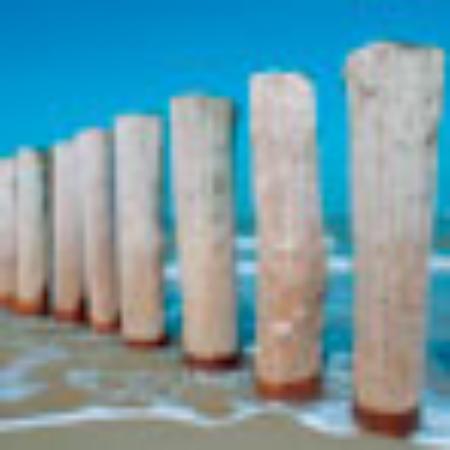 Reviewed September,2019Stefano PPerfect Tibet and Mt. Everest experienceAll the trip was perfect. The hotels was so much better than i expected. Excellent position near the old city center. The room was clean and very confortable. The guide Jigme was excellent, speack english perfetcly, gives excellet explanation of all sites we visited, and also is very simpatic, and very kind. He take care of all the guest, and prepared always the document, permit etc, and we just have to relax and enjoy the trip. He also offer us a welcome dinner.The programme was very nice, and we also visited a local tibetan family.MoreAll the trip was perfect. The hotels was so much better than i expected. Excellent position near the old city center. The room was clean and very confortable. The guide Jigme was excellent, speack english perfetcly, gives excellet explanation of all sites we visited, and also is very simpatic, and very kind. He take care of all the guest, and prepared always the document, permit etc, and we just have to relax and enjoy the trip. He also offer us a welcome dinner.The programme was very nice, and we also visited a local tibetan family.
Reviewed September,2019Stefano PPerfect Tibet and Mt. Everest experienceAll the trip was perfect. The hotels was so much better than i expected. Excellent position near the old city center. The room was clean and very confortable. The guide Jigme was excellent, speack english perfetcly, gives excellet explanation of all sites we visited, and also is very simpatic, and very kind. He take care of all the guest, and prepared always the document, permit etc, and we just have to relax and enjoy the trip. He also offer us a welcome dinner.The programme was very nice, and we also visited a local tibetan family.MoreAll the trip was perfect. The hotels was so much better than i expected. Excellent position near the old city center. The room was clean and very confortable. The guide Jigme was excellent, speack english perfetcly, gives excellet explanation of all sites we visited, and also is very simpatic, and very kind. He take care of all the guest, and prepared always the document, permit etc, and we just have to relax and enjoy the trip. He also offer us a welcome dinner.The programme was very nice, and we also visited a local tibetan family.
I raccomande a lot this company and this guide.
Thank you Tibet vista, and thank you for everithing Jigme, hope to see you again!!Less -
 Reviewed September,2019nadiatsTravel to Tibet and treking the Himalayas with amazing tour guide Ga RongWe were extremely happy with Travel Vista and their services, especially our tour guide, Garong our driver, Dodji. We were extremely impressed with the knowledge, communications skills, professionalism, perfectionism, and willingness of our guide, Garong, to help us in all aspects of our journey, including helping accommodating our daughter's need for gluten free diet and encouraging our young boy, 8 years old, on a arduous 1-week trek on the Himalayas. Garong is the best guide we have ever come across and he deserves our highest recommendation!
Reviewed September,2019nadiatsTravel to Tibet and treking the Himalayas with amazing tour guide Ga RongWe were extremely happy with Travel Vista and their services, especially our tour guide, Garong our driver, Dodji. We were extremely impressed with the knowledge, communications skills, professionalism, perfectionism, and willingness of our guide, Garong, to help us in all aspects of our journey, including helping accommodating our daughter's need for gluten free diet and encouraging our young boy, 8 years old, on a arduous 1-week trek on the Himalayas. Garong is the best guide we have ever come across and he deserves our highest recommendation! -
 Reviewed September,2019Yin G8 day trip in TibetA warm thank you to Jamyang tsering, our tibet tour guide. As far as tour guides go, he was a beyond exceptional. Our experience in tibet would not have been as fulfilling as it was without his knowledge and understanding of tibetan culture and religion!
Reviewed September,2019Yin G8 day trip in TibetA warm thank you to Jamyang tsering, our tibet tour guide. As far as tour guides go, he was a beyond exceptional. Our experience in tibet would not have been as fulfilling as it was without his knowledge and understanding of tibetan culture and religion! -
 Reviewed September,2019Doru Amedeu G
Reviewed September,2019Doru Amedeu G
Jerusalem, Israel8 days Lassa to EBCFirst my logistic was perfect organized by Mr.Jim Pel that provided me with the necessary tickets and aprovals.
Second the tour guide Mr.Tenzen was very friendly ,hepful and with profound knowledge of the history and culture of Tibet,taking care of all our necessities.
The acomodation was excelent and according to our expectation,even we choosed to sleep in tent house and not in a regular house. The owners of the tents tried their best to provide us with maximum confort according to those specific conditions.MoreFirst my logistic was perfect organized by Mr.Jim Pel that provided me with the necessary tickets and aprovals.
Second the tour guide Mr.Tenzen was very friendly ,hepful and with profound knowledge of the history and culture of Tibet,taking care of all our necessities.
The acomodation was excelent and according to our expectation,even we choosed to sleep in tent house and not in a regular house. The owners of the tents tried their best to provide us with maximum confort according to those specific conditions.
Because I've taken medecines according to advices of the doctor I haven't any problems with the altitude. Indeed in the first days I was moving slowly (the same advice our guide tour gave us) in the last days I could even to run. And seeng the Everest at sun set (with the help of the weather) was indeed very special.
I'll recomend this tour to everyone who don't have special problems with the health.
Me for example I have controled blood high tension but with the regular medecines I had no problems Doru Gheorghiescu. Less -
 Reviewed September,2019RajuV7Best Trip I have ever had in my life..7 days Lhasa and Kathmandu overland trip.I should say its 10 out of 10, very nice excellent tour, all our permits/tickets/air/train/hotels/tents/everything was arranged in advance. Cindy our tour consultant was amazingly active and quite fast in arranging my travel. I had an excellent trip also who accompanied us with our Tour guide by the name Tsedon, she was amazing and fantastic, who had full knowledge of the Tibetian history and details of each and every visit which we made during the entire trip. Very friendly,helpful, and she attended to all our needs and made us really comfortable during the entire journey.MoreI should say its 10 out of 10, very nice excellent tour, all our permits/tickets/air/train/hotels/tents/everything was arranged in advance. Cindy our tour consultant was amazingly active and quite fast in arranging my travel. I had an excellent trip also who accompanied us with our Tour guide by the name Tsedon, she was amazing and fantastic, who had full knowledge of the Tibetian history and details of each and every visit which we made during the entire trip. Very friendly,helpful, and she attended to all our needs and made us really comfortable during the entire journey. thanks also to Tibet Vista organizers which was Cindy who had also arranged the hotels and Bus/train/flight and all the Visas/permit issues. I just felt so sad that the tour ended 7days, which we wished to be more...
Reviewed September,2019RajuV7Best Trip I have ever had in my life..7 days Lhasa and Kathmandu overland trip.I should say its 10 out of 10, very nice excellent tour, all our permits/tickets/air/train/hotels/tents/everything was arranged in advance. Cindy our tour consultant was amazingly active and quite fast in arranging my travel. I had an excellent trip also who accompanied us with our Tour guide by the name Tsedon, she was amazing and fantastic, who had full knowledge of the Tibetian history and details of each and every visit which we made during the entire trip. Very friendly,helpful, and she attended to all our needs and made us really comfortable during the entire journey.MoreI should say its 10 out of 10, very nice excellent tour, all our permits/tickets/air/train/hotels/tents/everything was arranged in advance. Cindy our tour consultant was amazingly active and quite fast in arranging my travel. I had an excellent trip also who accompanied us with our Tour guide by the name Tsedon, she was amazing and fantastic, who had full knowledge of the Tibetian history and details of each and every visit which we made during the entire trip. Very friendly,helpful, and she attended to all our needs and made us really comfortable during the entire journey. thanks also to Tibet Vista organizers which was Cindy who had also arranged the hotels and Bus/train/flight and all the Visas/permit issues. I just felt so sad that the tour ended 7days, which we wished to be more...
Anyways I am definitely will go for the other Tours in the near future with Tibet Vista., I had no regrets and hope to meet with the same Tour Guide Ms Tsedon. Thankyou Tibet Vista. Less -
 Reviewed September,2019Kathryn H
Reviewed September,2019Kathryn H
Minneapolis, Minnesota15 Day Mt. Kailash TourTraveling to Tibet was a once-in-a-lifetime trip!
Kristin was an amazing advisor for making my travel plans, and was very detail oriented and patient with any and all questions.
My experience of Tibet was incredible--- on a spiritual, personal and intellectual level. I learned so many things from my guide Tenzin Leo. Right from the beginning he made me feel very comfortable and excited to embark on the adventure. His kind and happy demeanor set the tone for the trip and quickly helped our small group of five people feel at ease. I did not know anyone in my group before heading out and I will affirm that this experience is for everyone and do not be hesitant to sign up.MoreTraveling to Tibet was a once-in-a-lifetime trip!
Kristin was an amazing advisor for making my travel plans, and was very detail oriented and patient with any and all questions.
My experience of Tibet was incredible--- on a spiritual, personal and intellectual level. I learned so many things from my guide Tenzin Leo. Right from the beginning he made me feel very comfortable and excited to embark on the adventure. His kind and happy demeanor set the tone for the trip and quickly helped our small group of five people feel at ease. I did not know anyone in my group before heading out and I will affirm that this experience is for everyone and do not be hesitant to sign up. I highly recommend Tenzin Leo as a guide. When I was winded on the trail he was incredibly supportive and positive, validating my experience. By the end of the travels we felt like family. Do not miss out on this experience--Less -
 Reviewed September,2019ecoshamanismMount Kailash 13 day tourAn interesting tour of monasteries, local towns and an epic trek round Mt Kailash with an extremely good guide, Nawang Tenzin. The Tibetan people are really lovely with beautiful smiles and the land is the same.
Reviewed September,2019ecoshamanismMount Kailash 13 day tourAn interesting tour of monasteries, local towns and an epic trek round Mt Kailash with an extremely good guide, Nawang Tenzin. The Tibetan people are really lovely with beautiful smiles and the land is the same.
Beware the long bus journeys and 3 day trek which was difficult in terms of altitude. -
 Reviewed November 2, 2019misstcooney
Reviewed November 2, 2019misstcooney
Shanghai, China15 day tour to Everest Base Camp and Mt KailashI cannot recommend it highly enough!
Kristen liaised with plenty of information prior to the trip and warned about the road conditions, the toilets, lack of showers in places etc. I think all of these points are really important, and I appreciated being mentally prepared for all of these, as well as bringing wet wipes, prunes, toilet paper and a neck pillow. There are long days in the bus where natural toilets are way better options than manmade ones. I was very appreciative as my tour guide Pasang was always considerate of the fact I was the only female on the trip, and he was proactive in finding me a spot.MoreI cannot recommend it highly enough!
Kristen liaised with plenty of information prior to the trip and warned about the road conditions, the toilets, lack of showers in places etc. I think all of these points are really important, and I appreciated being mentally prepared for all of these, as well as bringing wet wipes, prunes, toilet paper and a neck pillow. There are long days in the bus where natural toilets are way better options than manmade ones. I was very appreciative as my tour guide Pasang was always considerate of the fact I was the only female on the trip, and he was proactive in finding me a spot.
The tour was broken up with days traveling and monetary visits, time taken at the lake, Glacier and other various photo opportunities. Pasang gave us ample information to understand what was happening, what we were doing next and from the outset he called us friends and really meant it. He was very relaxed and approachable and managed to explain complex ideas in the monasteries etc in an easy to digest way, even for people with no prior knowledge. Pasang was awesome in that he kept tabs on everyone’s interest/energy levels and adapted his level of detail accordingly. He also provided coffee at break times on the journey which was a saviour to most on the bus each morning.
The one thing I was a little nervous about prior to this trip was altitude sickness. What I really liked about this tour is that you gradually get higher and higher in altitude so it gives you a chance to adapt. You get a few days in Lhasa to become accustomed before getting more out and about. I think actually Pasang switched up the order of a nights accommodation to make it easier for us finding it harder to adjust. One thing I recommend that saved me and my afternoon/early morning headaches (once I had had plenty of water) was coke. Normally don’t drink the stuff but it really did help with my aggressive/persistent headaches. These are available most places so that was lucky. Pasang also had plenty of oxygen canisters available but I wasn’t feeling short of breath so didn’t use them.
Highlights for this trip are definitely Everest Base Camp and Mt Kailash, plus a surprise Glacier on route. The driving days are long to get to Mt Kailash but 100% worth it. Our driver did such a great job. The roads are mostly sealed, but even so, he had to watch out/slow down for holes/uneven surfaces. Roads are being improved at the moment which meant we had to off-road for a whole section but our driver was confident throughout. Definitely bring a neck pillow, you get bounced around a fair bit which rocked quite a few people to sleep each day. You really start getting a feel for rural Tibet by taking the time to get that far west and the fact that basically everyone is hiking the Kailash Kora as part of a pilgrimage adds to the experience. We saw only one other group of non-Tibetans during the 2.5 day hike. Day one of the hike is a nice stroll, and a great way to get your body used to it all. Day two is a big day. Early start to tackle a pass which you keep thinking is almost in reach. The ground is rocky and I definitely recommend poles (which you can pick up for cheap in the town you begin the walk). The downhill part is quite steep and more loose dirt than the other side. After you have made it down that section you are welcomed to a tea house for lunch and then it is flat and chilled for the afternoon. Day three is a breeze although the body is pretty knackered by this stage. Definitely pack as light as possible! Water is available in all of the tea houses along the way so carrying a couple of small bottles at a time is fine. Food is instant noodles during the day, so you tend to get a bit done with them, but they are enough. Less -
 Reviewed September,2019Aida STibet/Lhasa-Mount Everest base camp- Nepal borderFantastic 8 day trip starting Tibet-Lhasa 3 days,5 days through Tibet to Mount Everest base camp and then on to Nepal's border. The whole trip was well planned by Tibet Vista, the guide was very knowledgeable and told us everything we needed / wanted to know about historical monuments and culture. There was plenty of time at all the different sights we were at, so no stress. All the hotels were of very good standard and good breakfast. We are super happy with our trip through Tibet, we will go home so much richer on everything.
Reviewed September,2019Aida STibet/Lhasa-Mount Everest base camp- Nepal borderFantastic 8 day trip starting Tibet-Lhasa 3 days,5 days through Tibet to Mount Everest base camp and then on to Nepal's border. The whole trip was well planned by Tibet Vista, the guide was very knowledgeable and told us everything we needed / wanted to know about historical monuments and culture. There was plenty of time at all the different sights we were at, so no stress. All the hotels were of very good standard and good breakfast. We are super happy with our trip through Tibet, we will go home so much richer on everything.
Traveler Overview
 Jan 29, 2020Armine PapikyanI went to tibet with tibet vista january 2020. The tour is well organized, the guide and everyone else were nice. My guide was kun chock, he had knowledge in buddhism and could answer to all the questions. Although there were some difficulties connected with the situation in China they managed to keep us safe. I couldn't complete the whole tour but if I decide to come back to Tibet to see all the stuff I didnt manage to see this time I will for sure choose tibet vista again.
Jan 29, 2020Armine PapikyanI went to tibet with tibet vista january 2020. The tour is well organized, the guide and everyone else were nice. My guide was kun chock, he had knowledge in buddhism and could answer to all the questions. Although there were some difficulties connected with the situation in China they managed to keep us safe. I couldn't complete the whole tour but if I decide to come back to Tibet to see all the stuff I didnt manage to see this time I will for sure choose tibet vista again. Jan 2, 2020Ruben PardinaOur experience teavelling to Lhasa and Everest was amazing thanks to our guide Kunchok and driver Tashi. Very flexible, knowledgeable and helpful. 100% recommend this great adventure!
Jan 2, 2020Ruben PardinaOur experience teavelling to Lhasa and Everest was amazing thanks to our guide Kunchok and driver Tashi. Very flexible, knowledgeable and helpful. 100% recommend this great adventure! Nov. 13, 2019Brian GatelyGood service! And to make up 25 characters.
Nov. 13, 2019Brian GatelyGood service! And to make up 25 characters. Aug 30, 2019Georgi PetrovExcellent company with caring and knowledgeable staff and good prices. They were very flexible with our needs. Our guide was Ga Rong. He was amazing and we highly recommend him.
Aug 30, 2019Georgi PetrovExcellent company with caring and knowledgeable staff and good prices. They were very flexible with our needs. Our guide was Ga Rong. He was amazing and we highly recommend him.
He knew a tremendous amount of history and philosophy which was an excellent resource in the monasteries. He was also very skilled during the trekking part of our trip. He was an excellent cook that was very accommodating to the dietary needs of our daughter (12 years) who has celiac. He was also very patient and helpful to our eight year old son, especially during the long parts of the trek.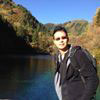 Aug 23, 2019Robert Sham-maneI really enjoyed my trip to tibet. Its an unforgettable experience. It was a really challenging experience because of the high altitude and im from a sea level island country. I was in a group of around 12 ppl and our guide name mr. kunchok. mr.kunchok was really attentive and and helped all of us in the group so that this challenging experience in Tibet was as smooth as possible. He shared his deep knowledge throughout the journey. This guy really knows his stuff.His a top top professional!!! so thank you mr kunchok. Im really proud to have accomplished this dream to visit tibet. Anyone visiting Tibet i highly recommend Tibet vista travel.
Aug 23, 2019Robert Sham-maneI really enjoyed my trip to tibet. Its an unforgettable experience. It was a really challenging experience because of the high altitude and im from a sea level island country. I was in a group of around 12 ppl and our guide name mr. kunchok. mr.kunchok was really attentive and and helped all of us in the group so that this challenging experience in Tibet was as smooth as possible. He shared his deep knowledge throughout the journey. This guy really knows his stuff.His a top top professional!!! so thank you mr kunchok. Im really proud to have accomplished this dream to visit tibet. Anyone visiting Tibet i highly recommend Tibet vista travel. Aug 05, 2019C.c. ZengOur family of four took a 6-day private tour in Tibet in July. It became such a memorable family trip, mostly because of the wonderful tour guide Jamyang Tsering (Tenzin) with Tibet Vista.
Aug 05, 2019C.c. ZengOur family of four took a 6-day private tour in Tibet in July. It became such a memorable family trip, mostly because of the wonderful tour guide Jamyang Tsering (Tenzin) with Tibet Vista.
Jamyang is such an amazing young man. Because I suffered high altitude sickness during the whole trip, he had to make re-arrangement of our itinerary almost every day, so that I could see the most significant sites while my physical strength allowed, then be taken back to hotel to rest while the whole group carried on....MoreOur family of four took a 6-day private tour in Tibet in July. It became such a memorable family trip, mostly because of the wonderful tour guide Jamyang Tsering (Tenzin) with Tibet Vista.
Jamyang is such an amazing young man. Because I suffered high altitude sickness during the whole trip, he had to make re-arrangement of our itinerary almost every day, so that I could see the most significant sites while my physical strength allowed, then be taken back to hotel to rest while the whole group carried on. He was so thoughtful and caring, our family members were all happy with his arrangement. On the last day of our trip, he skipped his meal to take me to see the Potala Palace at night. He knew how much I regret not be able to see the palace up close, and he made sure I finished the tour at the very spot – magnificent symbol of Tibet. Ten minutes before the observation deck closed, I took a picture of the palace at night, the most beautiful picture of the trip.
Jamyang is incredibly knowledgeable on Tibetan history, religion, and culture. He made this trip very educational and fascinating.
We were so lucky to have him as our tour guide. Less July 25, 2019Jessica JiaYour company, and especially your tour guide in a place like Tibet is what makes or breaks a trip. Unforgettable a place as Tibet is, my family and I would not have had the same amazing experience in Tibet without the help and support of Jamyang (Tenzin). Not only was he extremely impressive with his knowledge of 6 languages and endless knowledge of Tibetan history and culture, but he also is extremely friendly, personable and puts you at ease....MoreYour company, and especially your tour guide in a place like Tibet is what makes or breaks a trip. Unforgettable a place as Tibet is, my family and I would not have had the same amazing experience in Tibet without the help and support of Jamyang (Tenzin). Not only was he extremely impressive with his knowledge of 6 languages and endless knowledge of Tibetan history and culture, but he also is extremely friendly, personable and puts you at ease.No stiff, rehearsed fact reciting here, Jamyang is a charismatic story-teller and the real deal. Probably what was most notable about our experience with Jamyang was the care and attention he paid to a family member who was very sick with altitude sickness. He went above and beyond and past his scheduled working ours to deliver oxygen and make sure she was ok. Jamyang is the best and you DON'T want to do Tibet without him. Less
July 25, 2019Jessica JiaYour company, and especially your tour guide in a place like Tibet is what makes or breaks a trip. Unforgettable a place as Tibet is, my family and I would not have had the same amazing experience in Tibet without the help and support of Jamyang (Tenzin). Not only was he extremely impressive with his knowledge of 6 languages and endless knowledge of Tibetan history and culture, but he also is extremely friendly, personable and puts you at ease....MoreYour company, and especially your tour guide in a place like Tibet is what makes or breaks a trip. Unforgettable a place as Tibet is, my family and I would not have had the same amazing experience in Tibet without the help and support of Jamyang (Tenzin). Not only was he extremely impressive with his knowledge of 6 languages and endless knowledge of Tibetan history and culture, but he also is extremely friendly, personable and puts you at ease.No stiff, rehearsed fact reciting here, Jamyang is a charismatic story-teller and the real deal. Probably what was most notable about our experience with Jamyang was the care and attention he paid to a family member who was very sick with altitude sickness. He went above and beyond and past his scheduled working ours to deliver oxygen and make sure she was ok. Jamyang is the best and you DON'T want to do Tibet without him. Less July 24, 2019Meghan SchalkwijkWe took the 7 day tour from Lhasa to Kathmandu, via Shigatse and EBC. We were incredibly lucky with the weather and our lovely group members, but even luckier to have such a wonderful guide, Keldor, who shared his deep knowledge about Tibetan culture, history, and the environment. He helped us with everything we needed and made our journey an unforgettable experience....MoreWe took the 7 day tour from Lhasa to Kathmandu, via Shigatse and EBC. We were incredibly lucky with the weather and our lovely group members, but even luckier to have such a wonderful guide, Keldor, who shared his deep knowledge about Tibetan culture, history, and the environment. He helped us with everything we needed and made our journey an unforgettable experience. Tibet is absolutely beautiful but it can certainly be challenging to travel, and Keldor made sure everything ran smoothly, and was always patient, friendly, and sincerely interested in making our journey as comfortable and interesting as possible. I was truly moved by this journey and would recommend it to everyone.Less
July 24, 2019Meghan SchalkwijkWe took the 7 day tour from Lhasa to Kathmandu, via Shigatse and EBC. We were incredibly lucky with the weather and our lovely group members, but even luckier to have such a wonderful guide, Keldor, who shared his deep knowledge about Tibetan culture, history, and the environment. He helped us with everything we needed and made our journey an unforgettable experience....MoreWe took the 7 day tour from Lhasa to Kathmandu, via Shigatse and EBC. We were incredibly lucky with the weather and our lovely group members, but even luckier to have such a wonderful guide, Keldor, who shared his deep knowledge about Tibetan culture, history, and the environment. He helped us with everything we needed and made our journey an unforgettable experience. Tibet is absolutely beautiful but it can certainly be challenging to travel, and Keldor made sure everything ran smoothly, and was always patient, friendly, and sincerely interested in making our journey as comfortable and interesting as possible. I was truly moved by this journey and would recommend it to everyone.Less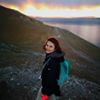 July 5, 2019Nico YipOur experience with TibetVista was great! 3 friends and me went in June for Chengdu-train-Lhasa 8 days-flight-Chengdu, which Tibet Vista took care of. It started 3 mths before the trip, where we contacted the agency for a trip which fits our timing, and Tony helped promptly with all the questions and arrangement, including train and flight tickets for Chengdu....MoreOur experience with TibetVista was great! 3 friends and me went in June for Chengdu-train-Lhasa 8 days-flight-Chengdu, which Tibet Vista took care of. It started 3 mths before the trip, where we contacted the agency for a trip which fits our timing, and Tony helped promptly with all the questions and arrangement, including train and flight tickets for Chengdu. We met our tour guide in Lhasa, Pasang, who is the best guide ever. He is a very genuine and warm person, who really take cares of us well, a cosy group of 12, for 7 days. He is so open is sharing his stories and experiences, his personal view on life and is passionate about what he does. We feel so lucky to have him with us on the trip. Thanks Pasang!Less
July 5, 2019Nico YipOur experience with TibetVista was great! 3 friends and me went in June for Chengdu-train-Lhasa 8 days-flight-Chengdu, which Tibet Vista took care of. It started 3 mths before the trip, where we contacted the agency for a trip which fits our timing, and Tony helped promptly with all the questions and arrangement, including train and flight tickets for Chengdu....MoreOur experience with TibetVista was great! 3 friends and me went in June for Chengdu-train-Lhasa 8 days-flight-Chengdu, which Tibet Vista took care of. It started 3 mths before the trip, where we contacted the agency for a trip which fits our timing, and Tony helped promptly with all the questions and arrangement, including train and flight tickets for Chengdu. We met our tour guide in Lhasa, Pasang, who is the best guide ever. He is a very genuine and warm person, who really take cares of us well, a cosy group of 12, for 7 days. He is so open is sharing his stories and experiences, his personal view on life and is passionate about what he does. We feel so lucky to have him with us on the trip. Thanks Pasang!Less July 1, 2019Zin ZongWe did the 15 day Mount Kailash kora end of May 2019, and it was a "breath-taking" experience The tremendous support and caring from our guide Ga Rong, our driver, and our amazing group made this trip very memorable! Thank you very much! Because of you, we surmounted this beautiful challenge with determination and created unforgettable memories....MoreWe did the 15 day Mount Kailash kora end of May 2019, and it was a "breath-taking" experience The tremendous support and caring from our guide Ga Rong, our driver, and our amazing group made this trip very memorable! Thank you very much! Because of you, we surmounted this beautiful challenge with determination and created unforgettable memories. Moreover, Ga Rong was knowledgeable, kind, and responsible. He was fond of Tibetan culture and history, and we learned lots from him during this trip. Definitely, recommend for anyone thinking of going to Tibet.Less
July 1, 2019Zin ZongWe did the 15 day Mount Kailash kora end of May 2019, and it was a "breath-taking" experience The tremendous support and caring from our guide Ga Rong, our driver, and our amazing group made this trip very memorable! Thank you very much! Because of you, we surmounted this beautiful challenge with determination and created unforgettable memories....MoreWe did the 15 day Mount Kailash kora end of May 2019, and it was a "breath-taking" experience The tremendous support and caring from our guide Ga Rong, our driver, and our amazing group made this trip very memorable! Thank you very much! Because of you, we surmounted this beautiful challenge with determination and created unforgettable memories. Moreover, Ga Rong was knowledgeable, kind, and responsible. He was fond of Tibetan culture and history, and we learned lots from him during this trip. Definitely, recommend for anyone thinking of going to Tibet.Less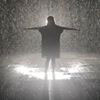 May 27, 2019Marlene OngI just had the most memorable trip of Tibet and EBC. The guide Jamyang tsering was very knowledgeable, patient and flexible to guests' needs and welfare. He has so much information on the places we are visiting and was often generous in sharing them. He is sometimes spontenous and would stop and show us things, I didn't expect to see eg how incense are made, Sky burial spot etc... Driver was very good too. But if there is something that should be improved would be quality of food. The welcome dinner was excellent, very delicious. The other places, I am not so certain...
May 27, 2019Marlene OngI just had the most memorable trip of Tibet and EBC. The guide Jamyang tsering was very knowledgeable, patient and flexible to guests' needs and welfare. He has so much information on the places we are visiting and was often generous in sharing them. He is sometimes spontenous and would stop and show us things, I didn't expect to see eg how incense are made, Sky burial spot etc... Driver was very good too. But if there is something that should be improved would be quality of food. The welcome dinner was excellent, very delicious. The other places, I am not so certain...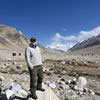 May 23, 2019Tristan JonathanThere is something esoteric and mystical about the land of Tibet and Mount Everest, and it is a bias you will hold until you land and truly experience what it has to hold
May 23, 2019Tristan JonathanThere is something esoteric and mystical about the land of Tibet and Mount Everest, and it is a bias you will hold until you land and truly experience what it has to hold
As someone who lives and works in China I had concerns about the differences in paperwork that had to be done but, they knew exactly what to do. I did not particularly like having to wait until the week before I was due to arrive to receive my Tibet Entry Permit but, that is not there doing, that is how it works. My contact via email was very patient with my weekly email asking for any updates, and sudden questions that I had thought of.MoreThere is something esoteric and mystical about the land of Tibet and Mount Everest, and it is a bias you will hold until you land and truly experience what it has to hold
As someone who lives and works in China I had concerns about the differences in paperwork that had to be done but, they knew exactly what to do. I did not particularly like having to wait until the week before I was due to arrive to receive my Tibet Entry Permit but, that is not there doing, that is how it works. My contact via email was very patient with my weekly email asking for any updates, and sudden questions that I had thought of.
Booking was certainly easy, as well as paying.
The most important things to seperate in this trip is the tour itself, and the facilities of the places you go to. While it is clear they have deals and partnerships with a few places, particularly the hotels, they are seperate.
The one aspect I have trouble with is the first day. Arriving at the airport, going to my meeting point, to then be thrown into a minibus with a lot of other equally confused people, to be taken to a hotel where nobody was there to explain what was going on was not how I expected to start the trip.
There must also be something Tibet Vista can do about solo travellers sharing rooms because my room mate for the trip had arrived earlier in the day, and had left to explore Lhasa so I was suddenly told I had to leave a deposit for a 2nd room key. It wasn't a choice, it was a requirement so it felt a little cheap.
Day two came around, and it is where the whole trip really took off. I met my group, I think we were all fortunate that we had people who were all similar in what we wanted from the trip, and a narrow age between us, certainly helped.
A shoutout to my guide Sunnam Tenple. Our guide was incredible, his english was significantly better than what I heard and saw from other guides (I can say this, I am an English teacher in China). He was incredibly knowledgeable, and kept getting us great opportunities. He had clearly learned all the secrets because we were given advice that other groups clearly weren't. It was getting us a better experience, and very importantly for all of us, a better picture.
A shoutout to our driver to. Unfortunately I don't have the name but, at all times I felt safe.
Food throughout the whole trip was pretty good. As with anywhere in China you have to be careful but listen to suggestions and you will be okay. Yak dumplings are amazing, as well as Tibetan Hotpot.
Everest basecamp, you definetely want to rush your guide so you sleep in the guest house rather than a tent. The facilities on Everest are closer to primitive, rather than basic, and most people plan there time there around only visiting them once. Bring hand sanitizer, and maybe invest in some of their shares while you are at it.
My final bit is altitude. If you are feeling bad, talk to your guide, they are pretty good at being able to help. Most definetely get help while in Lhasa because outside of that city it is pretty sparse.Thank you for Tibet Vista for a wonderful trip.Less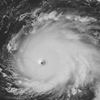 May 19, 2019Heather Pettit JohnsonTibet was a bucket list holiday and I was lucky to find Tibet Vista for my travels. The service was impeccable, the guides entertaining and agreeable, and the accommodations fantastic. I strongly recommend them to anyone planing a visit to the fascinating part of the world.
May 19, 2019Heather Pettit JohnsonTibet was a bucket list holiday and I was lucky to find Tibet Vista for my travels. The service was impeccable, the guides entertaining and agreeable, and the accommodations fantastic. I strongly recommend them to anyone planing a visit to the fascinating part of the world.
Nothing Matters More than Bringing you a Safe and Comfortable Journey!
Once you set foot in Lhasa, our Tibetan team at Tibet Vista is dedicated to ensuring your safe and pleasant travel experience. Trust us for excellent support on your smooth journey across the Tibetan Plateau. Your satisfaction and well-being are our top priorities!

We're the Only Tibetan Agency with a Designated Customer Service Manager
Our dedicated customer service manager, Mr. Kunga, provides prompt support for all tourists' needs, even if you're not traveling with us. As the sole recipient of the "National Golden Tour Guide" award in Tibet and boasting over 30 years of guiding experience, he ensures every of our clients has a fulfilling trip.

We’re Proud of Owning 40 of the Best Tibetan Tour Guides in the Industry
As a local Tibet travel agency since 1984, we feel so grateful and lucky to have some of the best local Tibetan guides (40 in total) in the industry. Thanks to our dedicated tour guide team, your journey on the roof of the world is ensured with the utmost joy, comfort, and satisfaction.

Our Driver Team Knows Every Inch of the Roads in Tibet
With years of experience, they ensure a safe and enjoyable journey through scenic routes, be it winding mountain paths or vast plateaus. Trust our team to guide you through the breathtaking landscapes, offering not just a ride but a memorable adventure. Additionally, our clean vehicles are equipped with oxygen supplies and bottled water for your comfort, prioritizing your satisfaction and safety at every turn.

We Lead: First and Largest Tibetan Travel Agency for Small Group Tours!
As the premier Tibetan local tour operator, we lead in organizing join-in small group tours—the first and largest of its kind. Our diverse itineraries offer classic experiences with frequent departures at the best prices. Over 5,000 clients annually join our small group tours, enjoying budget-friendly, non-shopping trips with a maximum of 12 participants. Explore Tibet effortlessly with us.

With Over 30 Years of Local Experiences, We 100% Guarantee Tibet Permit without Any Cost
With 30+ years of local expertise, we assure you a Tibet Permit at no extra cost. Trust us to handle all your travel needs seamlessly, ensuring a worry-free journey to explore the beauty of Tibet. Your permit is our guarantee for an unforgettable experience in the heart of the Himalayas.

To Contribute to Our Local Community, We Only Use the Tibetan-Owned Restaurants & Hotels
We support our community by exclusively choosing our Tibetan-owned restaurants and hotels. With a commitment to local businesses, your journey with us contributes directly to the well-being of the Tibetan community. Experience authenticity while making a positive impact on the places you visit.

We Strive to Show the Real Tibet to Our Clients & Explore the In-Depth Culture of Tibet
Discover the true essence of Tibet with us! We are dedicated to showcasing the real Tibet and delving into its rich culture. Our aim is to provide you an authentic experience, unveiling the beauty and depth of Tibetan traditions. Join us for a journey beyond the surface, into the heart of Tibet.

Never Rushed: We Make Sure Our Clients Thoroughly Enjoy Every Site to the Fullest
Relax and savor every moment with us! We prioritize your enjoyment by ensuring a leisurely pace to explore each site fully. Never rushed, our tours offer a delightful experience, allowing you to soak in the beauty and richness of every destination. Travel with us for a truly fulfilling journey.

With 7/24 Local Support, We Check with the Guide Daily to Ensure a Smooth Trip
Travel worry-free with our 24/7 local support! We prioritize your comfort and safety, checking in daily with our guides to ensure a seamless journey. With us, you have continuous assistance, making your trip smooth and enjoyable. Explore confidently, knowing we are here for you every step of the way.

We Annually Enhance all Our Trips to Provide the Highest Level of Quality for Each Destination in the Industry
Join us for top-notch travel experiences! We continually elevate our trips, enhancing quality each year for every destination. Our commitment to excellence ensures you receive the highest level of service in the industry. Embark on unforgettable journeys with us, where every detail reflects our dedication to your satisfaction.
Contact us for your dream trip now !
Enquire NowYou May Also Like:
-
11-Day Hiking to Mountain Everest
Tour Route: Lhasa,Shigatse,Tingri,RongbukMongastery
From USD4619 p.p
View Details -
5-Day Lhasa to Tsetang Explore Trip
Tour Route: Lhasa - Gyantse - Shigatse - E.B.C
From USD1019 p.p
View Details







 View Trip Map
View Trip Map
 5.0
5.0 
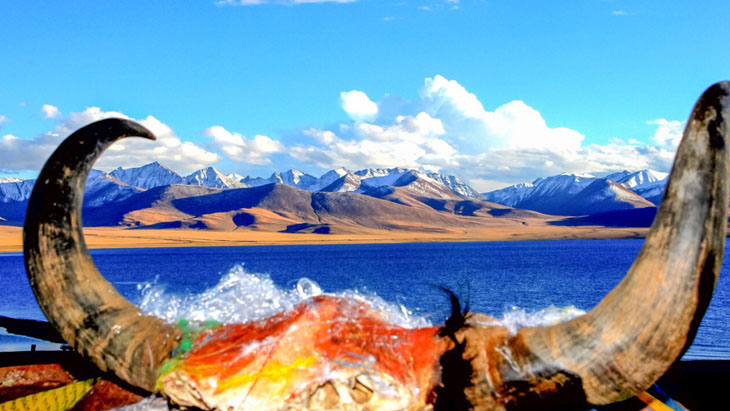
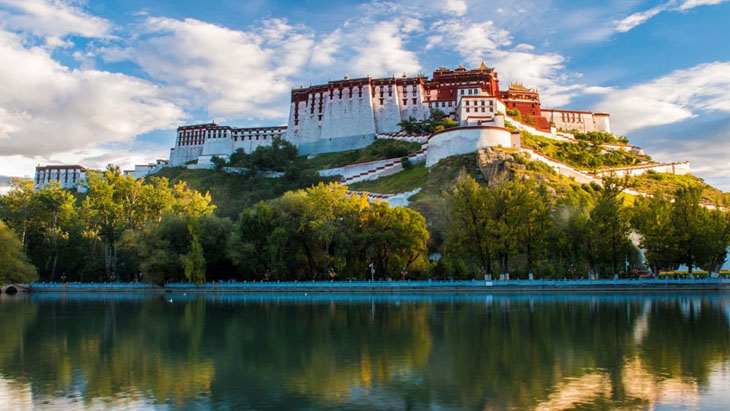
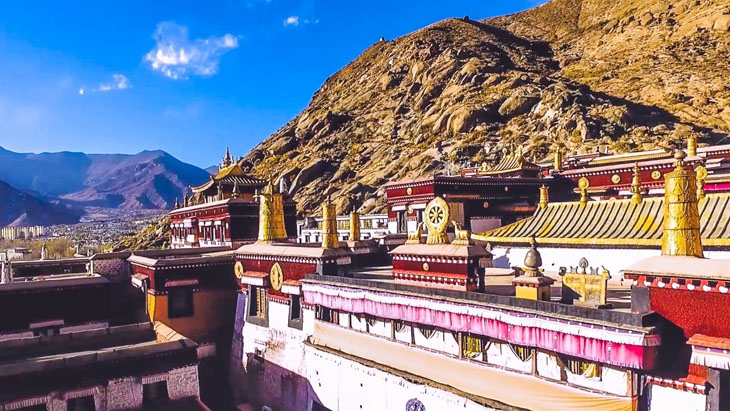
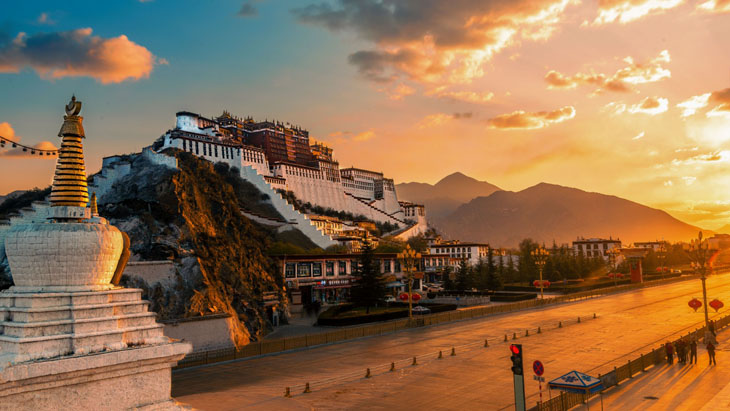
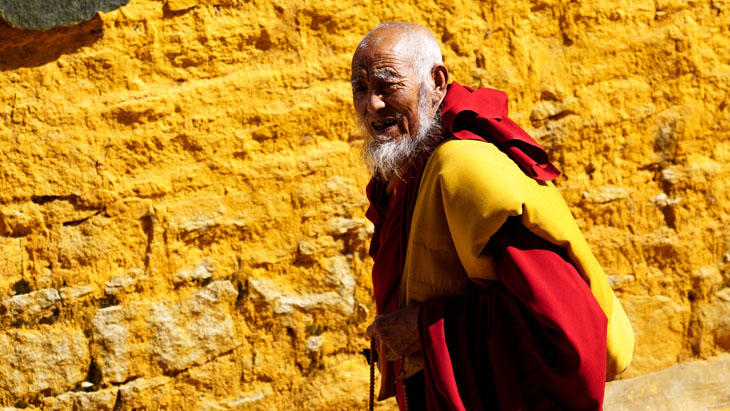
















35 Comment ON "5-Day Lhasa to Tsetang Explore Trip"
Asked by Liliana Me** from Macau
plan a 7-8days trip for me and my boyfriend in April
Hi! I would like to plan a 7-8days trip for me and my boyfriend in April (3rd to 10th ideally) to Nepal, Tibet, and, if possible, Bhutan. Do you think it would be doable? Based on what I read, there are some places/things to do to consider: Nepal: Everest Base Camp trek and the Annapurna Circuit, ancient temples, sacred sites like Lumbini, Kathmandu, Tibet: The Potala Palace in Lhasa and the Jokhang Temple. eventually the holy Mount Kailash or the high-altitude plains. Bhutan: Thimphu, Paro, and the famous Tiger’s Nest Monastery. To take part in cultural traditions, yoga, meditation... Of course I am open to any recommendations you could make. For your reference, we are both based in Asia: him, in Bangkok and myself in Macau. Thank you so much for the information you could provide and, if possible, an estimated budget for your offer.
Asked by Ke** from Singapore
Cycling Tour to Mt Kailash
Hi , we are planning a Cycling Trip once Tibet opens for Tourism. The plan is we shall arrive to Kathmandu , travel to the border and enter via Kerung. Can you pls send a day to day Itinerary starting from Kerung - Lake Manasarovar - Darchen - Asthapath. We shall go around Kailash on foot and resume Cycling back to Kerung. We are a Group of 6-8 persons. Thanks Pls send ur reply to Kevin
Asked by Debo** from USA
Please can you tell me the prices and dates for the Tibet Luxury Tour.
Also, could you please provide a detailed itinerary - I want to see how many hours are spent on buses/vehicles. Thank you! Deborah
Asked by S** from HongKong
Tibet Tour from HK
May I know if holding Mainland Travel Permit for HK Residents. is it also need to get the visa permit to Tibet and what is the procedure if need to apply? Thank you
Asked by Na** from USA
Is Kailash Mansarovar Trip open for Indian Passport Holder?
Is it open for Indian Passport Holder?
Asked by A** from Singapore
Enquiry on private tour
We are planning a trip from Hong Kong to Tibet during the 12th to 21st of April. We want a private tour that covers all the scenic places as well as the EBC. Please advise an itinerary along with the cost breakdown. Thanks.
Asked by Na** from Canada
We would like to take the train from Xining to Lhasa
Asked by Gr** from Canada
The "Tibet Entry Permit" should be apply
Asked by Tam** from Singapore
Sightseeing Potala Palace
Asked by Ka** from Singapore
plan to travel to Mount Kailash